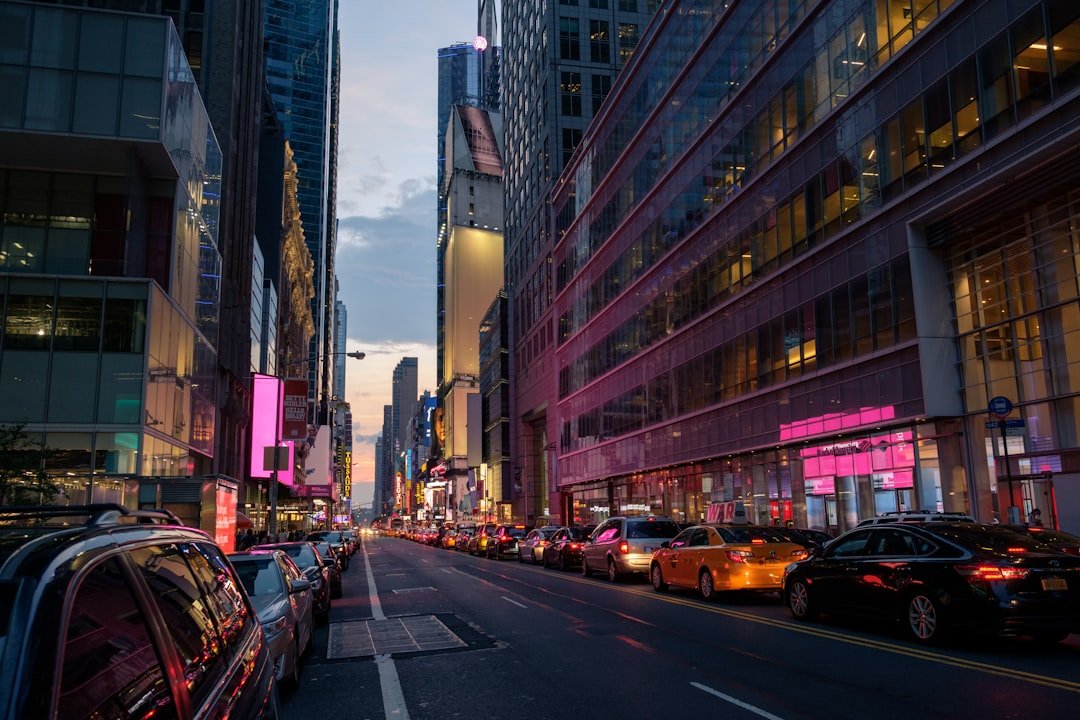A Comprehensive Look at Noise Pollution in New York City Known as the “city that never sleeps,” New York City is a thriving metropolis with a diverse population, busy streets, & tall skyscrapers. Noise pollution is the price paid for this vibrancy, though. An overpowering auditory environment is created by the clamor of honking automobiles, construction activities, subway trains, and the general bustle of urban life. Unwanted or damaging sound that upsets the natural equilibrium of life is known as noise pollution, and it has become a major problem in a city like New York. There are many different types of sources of noise pollution in New York City. The city’s sounds, which range from the constant honking of automobiles to the steady thump of music from surrounding venues, can be both thrilling and draining.
Key Takeaways
- Noise pollution is a significant issue in NYC, impacting the health and well-being of its residents.
- Exposure to high levels of noise pollution can lead to various health problems, including stress, sleep disturbances, and cardiovascular issues.
- NYC has regulations and policies in place to address noise pollution, but enforcement and compliance remain a challenge.
- Strategies for reducing noise pollution in urban areas include sound barriers, green spaces, and the use of quieter technologies.
- Community involvement is crucial in addressing noise pollution, as local residents can advocate for change and participate in noise monitoring efforts.
Noise is one of the biggest environmental stressors affecting residents of New York City, according to the Department of Environmental Protection (DEP). It is becoming more and more important to comprehend the effects of noise pollution on the health and well-being of the city’s residents as it grows & changes. Noise pollution has a significant and complex effect on health. Long-term exposure to loud noises has been linked to a number of health problems, such as stress, anxiety, and disturbed sleep, according to research.
The World Health Organization (WHO) has identified noise pollution as a major environmental risk factor, connecting it to serious health conditions like cardiovascular diseases. People may have to deal with these negative effects on a daily basis in a city like New York, where ambient noise levels frequently surpass advised thresholds. Also, it is impossible to ignore the psychological costs associated with living in a noisy environment. Anger and a lower quality of life can result from continuous exposure to distracting noises.
The difficulty of finding quiet in their homes or neighborhoods can be frustrating for many New Yorkers. Children are especially susceptible to the negative effects of noise pollution since it can impair their academic performance and cognitive development. The combined effects of these health issues highlight how urgently practical methods to reduce noise pollution in cities are needed. New York City has put in place a number of laws and policies to lessen the effects of noise pollution in response to the growing concerns about it. The main framework for controlling noise levels throughout the city was created in 2007 and is known as the Noise Code. This extensive law specifies acceptable noise levels for various activities and times of day, such as street performances and construction projects.
| Year | Noise Complaints | Noise Violations Issued |
|---|---|---|
| 2017 | 420,000 | 3,500 |
| 2018 | 410,000 | 3,200 |
| 2019 | 400,000 | 3,000 |
| 2020 | 380,000 | 2,800 |
Residents are also empowered by the code to report excessive noise disturbances, which enables city agencies to take enforcement action. Enforcing these rules is still difficult, though. Many locals believe that authorities frequently ignore or respond to noise complaints insufficiently.
The DEP has worked to spread knowledge of the Noise Code and promote community participation in reporting infractions. But due to the sheer number of noise complaints, the city’s resources may become overloaded, delaying response times. Regulations do exist, but their efficacy depends on public awareness as well as the city’s ability to implement them consistently. A diversified strategy is required to successfully address noise pollution in cities like New York City.
Sound barriers are one tactic that can be used alongside busy roads and building sites. These obstacles can greatly lessen the amount of sound waves that enter residential areas, giving impacted residents much-needed respite. Promoting quieter construction methods, like the use of low-noise equipment, can also lessen disruptions during necessary building projects.
Urban planning that gives green areas and materials that absorb sound top priority is another successful tactic. In addition to improving a neighborhood’s aesthetic appeal, parks and gardens act as organic sound barriers. Incorporating vegetation into urban planning can help residents live in a more peaceful environment by absorbing sound. Also, promoting the use of public transit can lower overall noise levels by reducing the number of cars on the road. Cities can make their residents’ living conditions more harmonious by implementing these tactics.
Involving the community is essential to successfully combating noise pollution. Residents develop a sense of ownership and responsibility for their surroundings when they are involved in conversations about noise concerns. Local advocacy organizations and neighborhood associations can act as forums for locals to discuss issues and work together to find solutions. Community members can exchange experiences and come up with ideas for solutions by holding workshops or meetings centered on noise pollution. Also, educational initiatives can help people comprehend their rights under the Noise Code and motivate them to report infractions when they occur. Through cultivating a culture of consciousness and activism regarding noise pollution, communities can collaborate to hold companies & individuals responsible for excessive noise levels.
The call for stricter laws and enforcement from local authorities is strengthened by this group effort, which also improves community cohesion. As technology develops, new and creative ways to lessen noise pollution are appearing. Active noise control (ANC) is one such technology that eliminates unwanted noise by using sound waves. Public transit systems like buses and subways are among the places where this technology has been successfully used.
ANC systems can be integrated into infrastructure or automobiles to greatly lessen the impact of noise on commuters. More efficient noise level monitoring and control is also being made possible by smart city initiatives. Real-time data on ambient noise levels can be collected by using sensors positioned throughout cities.
Targeted interventions can be informed by the analysis of this data to pinpoint areas with high noise levels. Also, communication between citizens & city agencies can be streamlined by mobile applications that allow residents to directly report noise disturbances, improving responsiveness to complaints. The auditory environment of cities like New York is greatly influenced by urban planning.
Carefully considered design decisions can have a big impact on noise levels and the general quality of life for locals. One way to reduce exposure to disruptive noises is through zoning laws that divide residential neighborhoods from busy commercial zones. Also, reducing reliance on automobiles and thereby reducing traffic-related noise can be achieved by implementing mixed-use developments that prioritize pedestrian-friendly environments. Also, establishing calmer areas in cities requires incorporating green infrastructure into urban planning.
Urban forests, landscaped public areas, and green roofs all improve aesthetics while acting as organic sound barriers to reduce noise pollution. Future development projects can prioritize these components, allowing urban planners to design spaces that support human well-being and ecological sustainability. Future prospects for reducing noise pollution in NYC depend on a confluence of technological advancement, community involvement, regulatory enforcement, & careful urban planning.
There is a growing need for practical solutions from both citizens and legislators as awareness of the negative health effects of noise pollution keeps rising. Additional funding for noise reduction projects is probably going to be driven by the city’s dedication to sustainability and quality of life. Also, New York City has the chance to set an example for creative methods of controlling noise pollution as cities around the world struggle with comparable issues relating to urbanization and environmental stressors. Governmental organizations, community groups, and private stakeholders can work together to create comprehensive strategies that not only address present problems but also foresee future urban living challenges.
In conclusion, although noise pollution is still a major issue for New Yorkers today, there is hope for a quieter future through coordinated efforts at several levels; crucial components of this effort include technological advancements, community involvement, regulatory frameworks, and strategic urban planning. The strategy for establishing a peaceful living environment for all of the city’s citizens must change along with the city.



